Knowledge of the basics of anatomy, the structure of your own body, together with an understanding of the meaning and structure of training, allows you to increase the effectiveness of sports many times over - after all, any movement, any sports effort is performed with the help of muscles. In addition, muscle tissue is a significant part of body weight - in men it accounts for 42-47% of lean body weight, in women - 30-35%, and physical activity, especially planned strength training, increases the proportion of muscle tissue. and physical inactivity, on the contrary, reduces it.
Muscle types
There are three types of muscles in the human body:
- skeletal (they are also called striated);
- smooth;
- and the myocardium, or heart muscle.
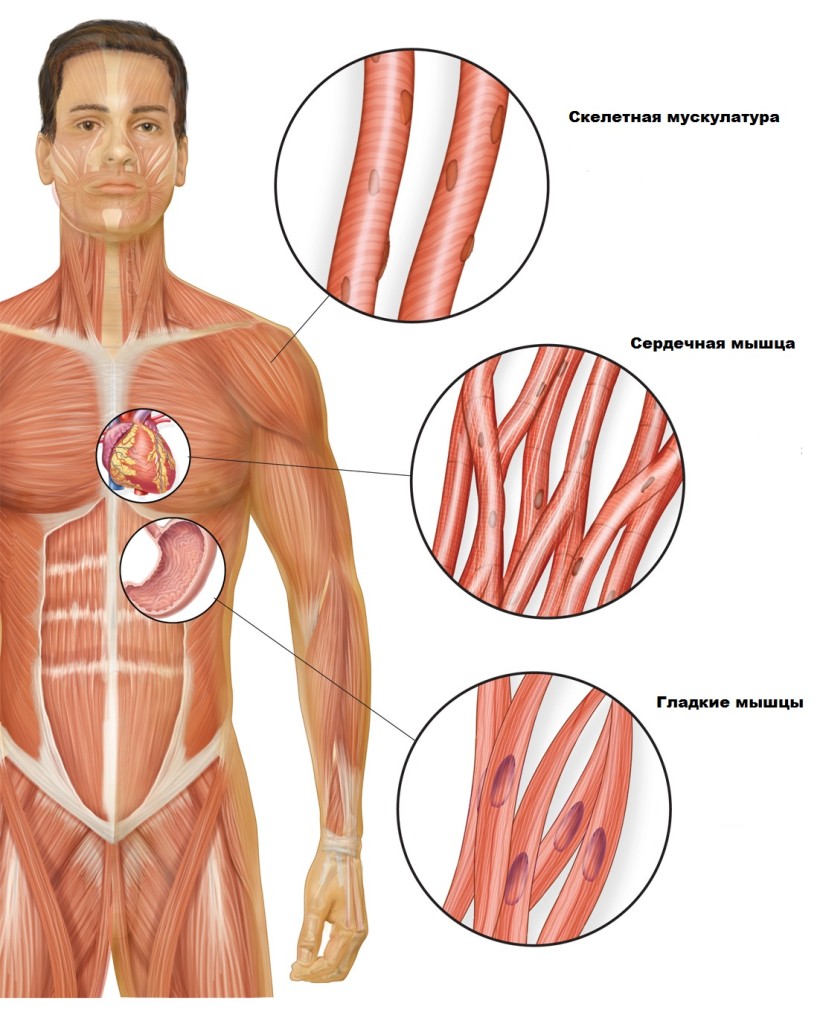
Smooth muscles form the walls of internal organs and blood vessels. Their distinctive feature is that they work independently of a person's consciousness: it is impossible to stop, for example, peristalsis (rhythmic contractions) of the intestine by an effort of will. The movements of such muscles are slow and monotonous, but they work continuously, without rest, all their lives.
Skeletal musculature responsible for maintaining the body in balance and performing a variety of movements. Do you feel like you “just” sit in a chair and relax? In fact, dozens of your skeletal muscles are working at this time. The work of skeletal muscles can be controlled by willpower. The striated muscles are able to contract quickly and relax just as quickly, but intense activity leads to fatigue relatively quickly.
Heart muscle uniquely combines the qualities of skeletal and smooth muscles. Just like skeletal muscles, the myocardium is able to work intensively and contract quickly. As well as smooth muscles, it is practically indefatigable and does not depend on the volitional effort of a person.
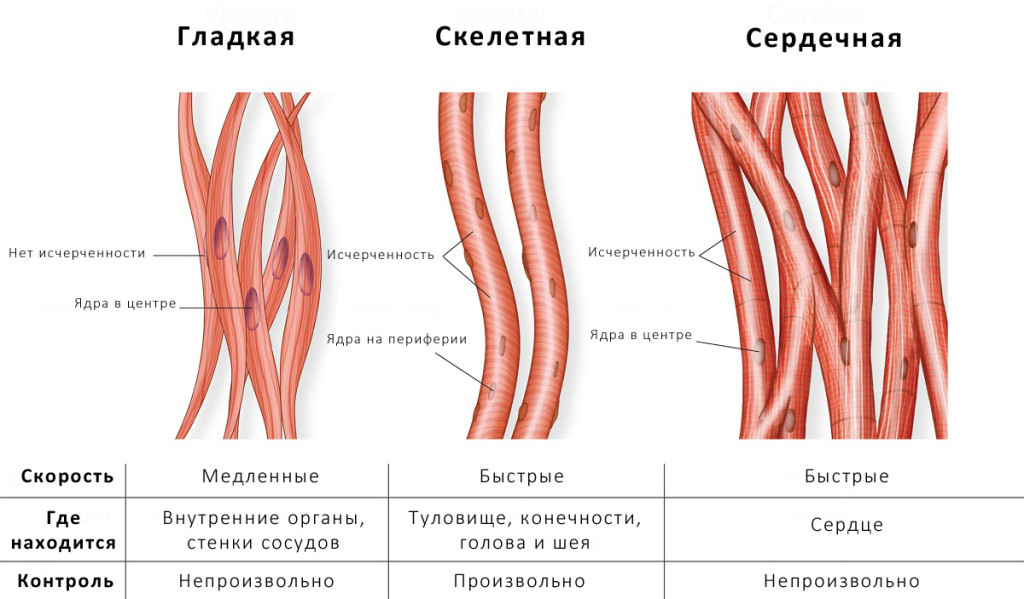
By the way, strength training not only "sculpts the relief" and increases the strength of our skeletal muscles - they also indirectly improve the quality of smooth muscle and heart muscle work. By the way, this leads to the "feedback" effect - the strengthened, developed through endurance training, the heart muscle works more intensively and more efficiently, which is reflected in the improvement of the blood supply to the whole body, including skeletal muscles, which, thanks to this, can tolerate even greater loads. Trained, developed skeletal muscles form a powerful "corset" that supports the internal organs, which plays an important role in the normalization of digestion processes. Normal digestion, in turn, means normal nutrition for all organs of the body, and muscles in particular.
Different types of muscles differ in their structure, but we will consider in more detail the structure of skeletal muscle, as related directly to the process of strength training.
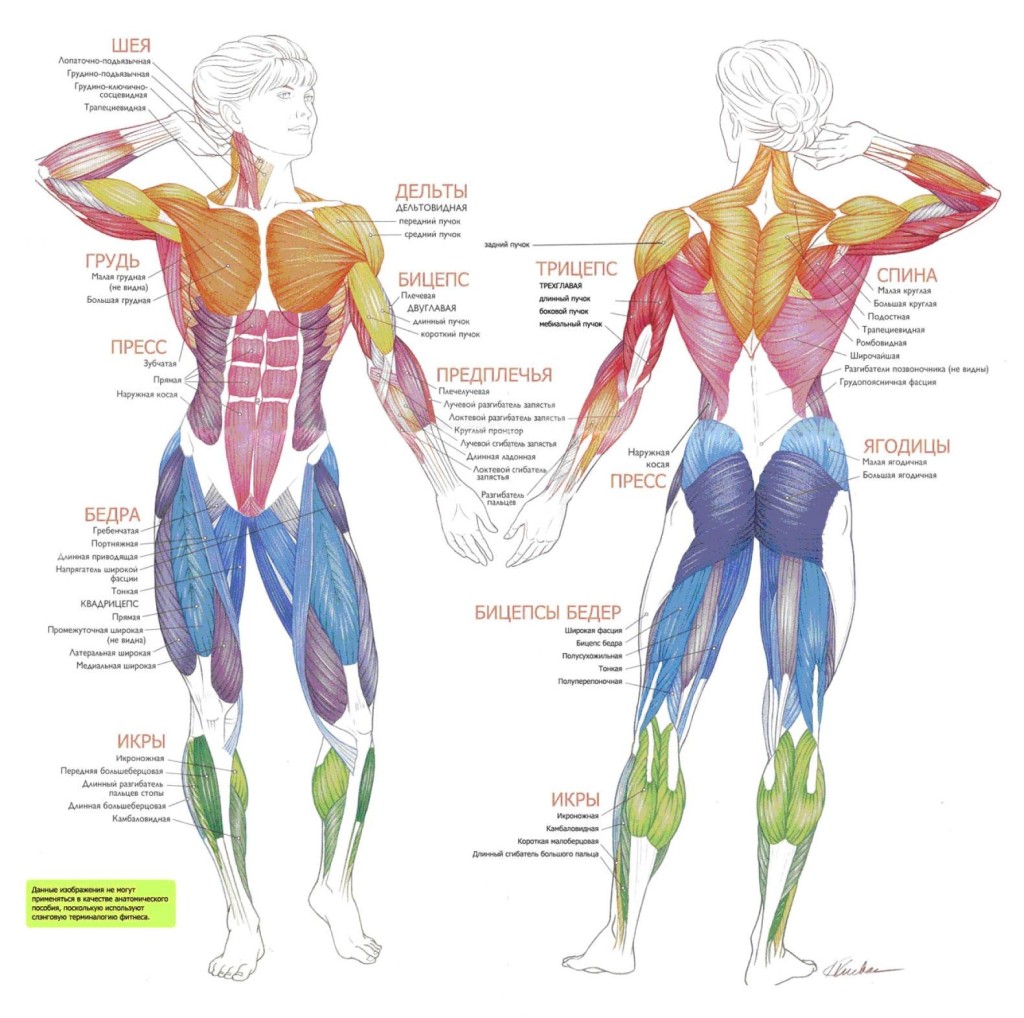
Focusing on skeletal muscle
The main structural component of muscle tissue is myocyte - muscle cell. One of the distinguishing features of the myocyte is that its length is hundreds of times greater than its cross-section, therefore the myocyte is also called muscle fiber. From 10 to 50 myocytes are combined into a bundle, and the muscle itself is formed from the bundles - in the biceps, for example, up to a million muscle fibers.
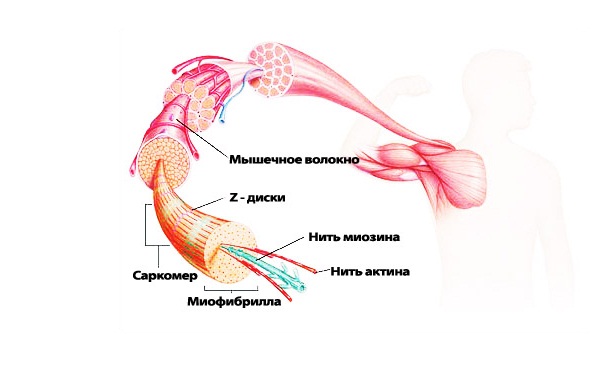
Between the bundles of muscle cells are the smallest blood vessels - capillaries, and nerve fibers. The bundles of muscle fibers and the muscles themselves are covered with dense sheaths of connective tissue, which at their ends pass into tendons that attach to the bones.
The main substance of the muscle cell is called sarcoplasm. The finest muscle filaments - myofibrils, which are the contractile elements of the muscle cell, are immersed in it. Each myofibril consists of thousands of elementary particles - sarcomeres, the main feature of which is the ability to contract under the influence of a nerve impulse.
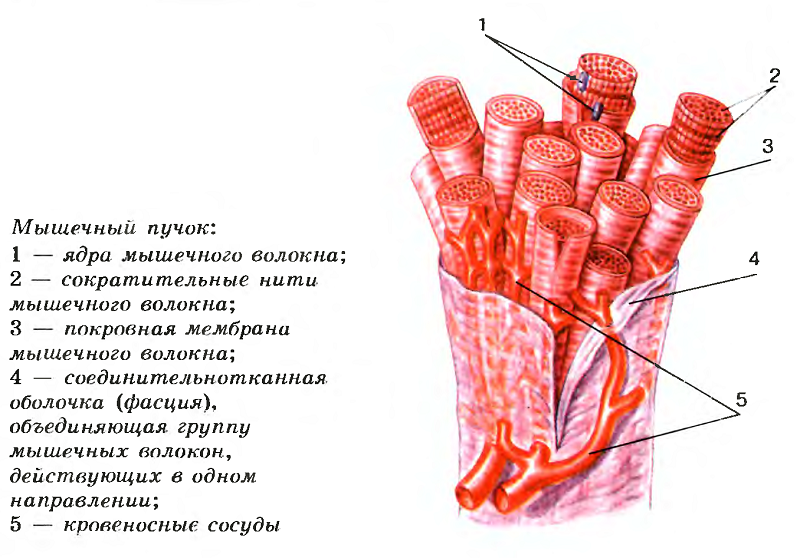
During targeted strength training, both the number of myofibrils of the muscle fiber and their cross section increase. First, this process leads to an increase in muscle strength, then - and to an increase in its thickness. However, the number of muscle fibers themselves remains the same - it is due to the genetic characteristics of the development of the body and does not change during life. From this, we can conclude that athletes have different physical prospects - those whose muscles are made up of more fibers are more likely to increase muscle thickness through strength training than those athletes whose muscles contain fewer fibers.
So, the strength of a skeletal muscle depends on its cross-section - that is, on the thickness and number of myofibrils that form the muscle fiber. However, the indicators of strength and muscle mass do not increase in the same way: with an increase in muscle mass by two times, the strength of the muscles becomes three times greater, and so far there is no single explanation for this phenomenon.
![]()
Skeletal muscle fiber types
The fibers that form skeletal muscles are divided into two groups: "slow", or ST-fibers (slow twitch fibers) and "fast", FT-fibers (fast twitch fibers). ST fibers contain a large amount of the red-colored protein myoglobin, which is why they are also called red fibers. These are hardy fibers, but they work at a load in the range of 20-25% of the maximum muscle strength. In turn, FT-fibers contain little myoglobin, which is why they are also called "white" fibers. They contract twice as fast as the "red" fibers and are capable of developing 10 times more strength.
At loads less than 25% of the maximum muscle strength, the ST fibers work first, and then, when they are depleted, the FT fibers are included in the work. When they use up their energy resource, they will be exhausted and the muscle will need rest. If the load is initially high, both types of fibers work simultaneously.
However, you should not mistakenly associate the types of fibers with the speed of movement that a person performs. What type of fibers is predominantly involved in the work at the moment depends not on the speed of the movement being performed, but on the effort that must be spent on this action. This is also related to the fact that different types of muscles performing different functions have a groove ratio of ST and FT fibers. In particular, the biceps, a muscle that performs predominantly dynamic work, contains more FT fibers than ST. In contrast, the soleus muscle, which experiences mainly static loads, consists mainly of ST fibers.
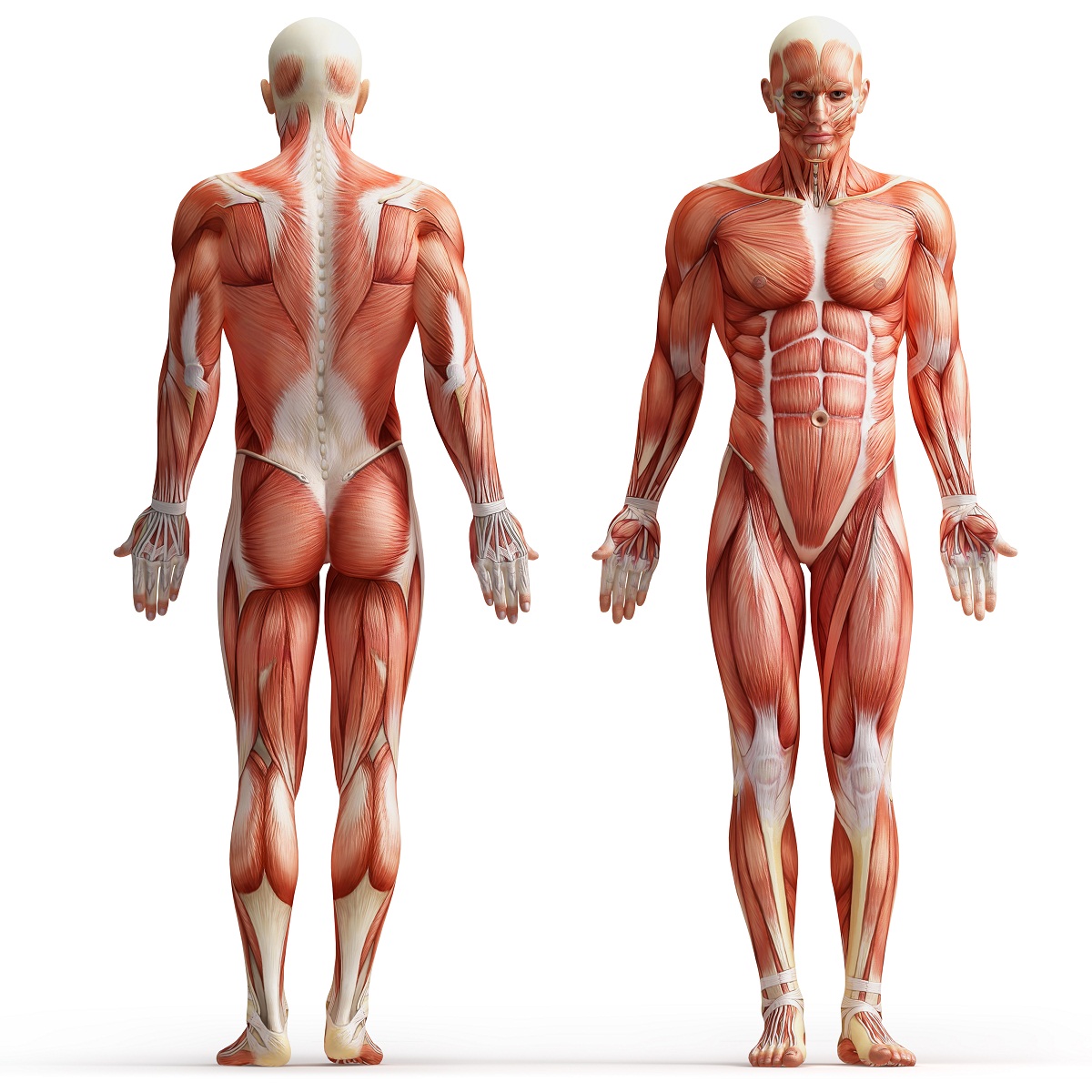
By the way, like the total number of muscle fibers, the ST / FT ratio in the muscles of a particular person is genetically determined and remains constant throughout life. This also explains the innate ability for certain sports: in the most "talented", outstanding sprinter runners, the calf muscles are 90% composed of "fast" fibers, while in marathon runners, on the contrary, up to 90% of these fibers are slow.
However, despite the fact that the natural number of muscle fibers, as well as the ratio of their fast and slow varieties, cannot be changed, well-planned and persistent training will force the muscles to adapt to the loads and will certainly bring results.
